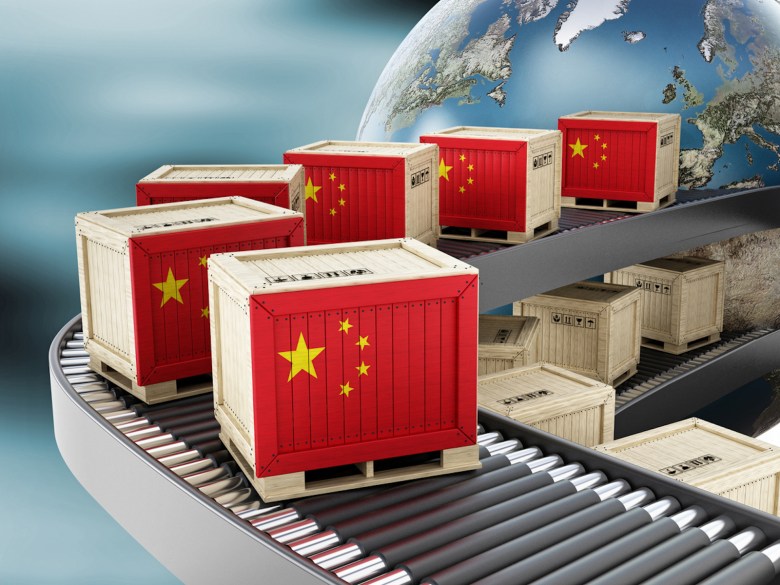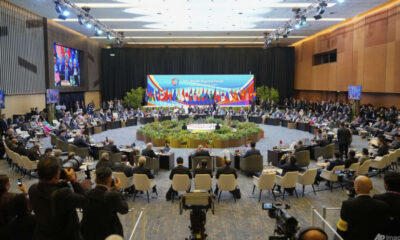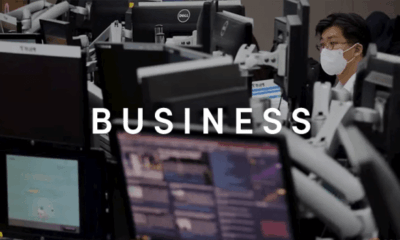Politics
China’s Export Slowdown Signals Global Economic Shifts Ahead

China’s export sector, a cornerstone of its economic strength for decades, is experiencing a significant slowdown. Recent data indicates a decline in overseas orders, raising concerns for global markets that depend on China for economic momentum. As the country’s trade surpluses appear to be nearing their limits, there is a growing risk that this vital driver of global growth could begin to stall just as other economies seek new avenues for expansion.
Official purchasing manager data has revealed a notable decrease in new export orders, with both state and private surveys falling short of expectations. This trend is alarming not just for China, but for the international community as well. A cooling in China’s economy can have widespread repercussions, affecting commodity exporters, multinational corporations, emerging markets, and global equity indices.
Despite these troubling signals, experts advocate against panic. For investors, this represents a moment that calls for careful strategy rather than pessimism. The trade data set to be released on August 7, 2023, is expected to show a 5% year-on-year rise in exports along with an impressive US$103.4 billion monthly surplus. However, beneath these figures lies a more complex story: exports to the United States fell by nearly 11% in June, highlighting increasing trade tensions and a decline in demand from key markets.
To maintain competitiveness, Chinese firms have been forced to lower prices significantly. Since late 2022, factory gate prices have been decreasing, rendering Chinese manufactured goods exceptionally affordable for international buyers. While this situation has provided temporary relief to exporters, it serves as a warning sign. Sustained deflation indicates weak domestic demand, overcapacity, and shrinking profit margins.
Nevertheless, it is essential to recognize that China’s manufacturing and export sector remains extensive, technologically advanced, and integrated into the global economy. The current slowdown should not be mistaken for a collapse; rather, it represents a deceleration from an unsustainable pace. This shift creates opportunities for global investors to reassess their strategies in anticipation of future developments.
As Chinese policymakers contemplate their next steps, the focus must shift towards anticipating capital flow in response to potential policy changes. Thus far, government stimulus measures have been modest and targeted, but the need for a more robust response is becoming increasingly apparent. Options such as interest rate adjustments, consumption incentives, or infrastructure investments could help rejuvenate demand and restore market confidence.
The transition in China’s export landscape also opens doors for other regions. Countries in Southeast Asia, South Asia, and Latin America are gaining traction as alternative manufacturing hubs and consumption markets. This shift is not about decoupling from China; it is about diversifying investment exposure. The economies that successfully combine political stability, reform momentum, and access to global capital are likely to emerge as relative winners in this evolving scenario.
China’s export slowdown prompts a reevaluation of risk and resilience. Currency dynamics are shifting as the renminbi faces downward pressure due to declining export revenues and ongoing capital outflows. Although this trend may negatively impact short-term investor returns in China, it could enhance competitiveness and potentially support a rebound in exports, especially if global demand strengthens later in 2025.
Simultaneously, global equity markets are undergoing a rebalancing. China is no longer an automatic buffer against Western economic weaknesses, and investors must adjust their macroeconomic assumptions accordingly. This transition also allows capital to flow toward emerging narratives—such as services, innovation, energy transition, and demographic growth—that are gaining momentum as the traditional China-centric investment strategies wane.
The fundamentals for China remain solid in the long term. The country boasts vast human capital, a dominant position in global manufacturing, leadership in sectors like clean energy and electric vehicles, and increasing outbound investments. However, investors should approach exposure to China thoughtfully, focusing on quality, valuations, and alignment with emerging policy trends.
While warning signs are evident regarding China’s export momentum—with softening numbers, muted sentiment, and uneven global demand—the situation is not dire. Instead, it is a pivotal moment for assessment and realignment in response to the changes already taking place in global capital flows. Every slowdown presents a chance for recalibration, and with it comes opportunity for those willing to adapt, reassess risk, and embrace a broader global perspective. China’s trade engine may not be operating at full capacity, but it is far from out of fuel, and new engines of growth are beginning to take shape around it.
-

 Business5 months ago
Business5 months agoKenvue Dismisses CEO Thibaut Mongon as Strategic Review Advances
-

 Lifestyle4 months ago
Lifestyle4 months agoHumanism Camp Engages 250 Youths in Summer Fest 2025
-

 Sports4 months ago
Sports4 months agoDe Minaur Triumphs at Washington Open After Thrilling Comeback
-

 Sports5 months ago
Sports5 months agoTupou and Daugunu Join First Nations Squad for Lions Clash
-

 Top Stories5 months ago
Top Stories5 months agoColombian Senator Miguel Uribe Shows Signs of Recovery After Attack
-

 World5 months ago
World5 months agoASEAN Gears Up for Historic Joint Meeting of Foreign and Economic Ministers
-

 Health4 months ago
Health4 months agoNew Study Challenges Assumptions About Aging and Inflammation
-

 Business5 months ago
Business5 months agoOil Prices Surge Following New EU Sanctions on Russia
-

 Entertainment4 months ago
Entertainment4 months agoDetaşe-Sabah Violin Ensemble Captivates at Gabala Music Festival
-

 Entertainment4 months ago
Entertainment4 months agoBaku Metro Extends Hours for Justin Timberlake Concert
-

 Top Stories5 months ago
Top Stories5 months agoRethinking Singapore’s F&B Regulations Amid Business Closures
-

 Business5 months ago
Business5 months agoU.S. House Approves Stablecoin Bill, Sends to Trump for Signature









